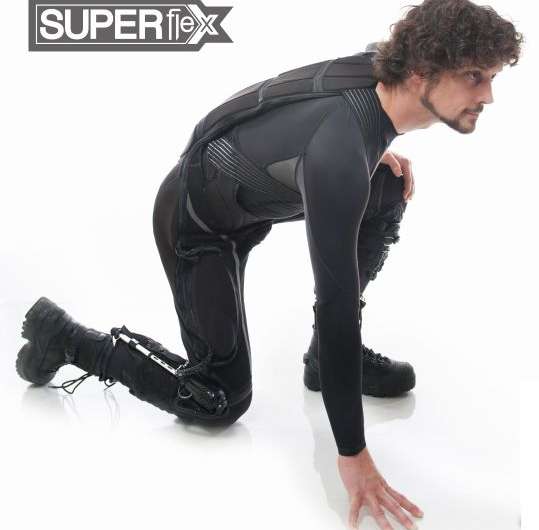(Tech Xplore)—Menlo Park, California-based SRI International has news about its robotics project known as Superflex, which is a suit to enhance the human musculoskeletal system.
The company announced Superflex, Inc. as a spinoff venture in April. SRI International said "Superflex will develop cutting-edge wearable robotics to enhance the human musculoskeletal system."
Signe Brewster on Friday wrote about the suit in MIT Technology Review.
This could be of benefit to the elderly or people with limited ability to get around easily, i.e., with reduced mobility. Why, though, would an elderly person want to switch, say, from something as simple as a walker? Actually, it might turn out that an elderly person just parks the walker and instead goes for this robotic suit.
A walker may seem to be a cost-effective solution in the short run for helping out people with limited mobility, but SRI Ventures president Manish Kothari said that "it completely disempowers, removes dignity, removes freedom, and causes a whole host of other psychological problems." The company goal is more than getting an elderly person to the corner store. It's more about stepping in to offer a walker alternative that removes "psychological-type encumbrances," as Kothari put it.
In addition to the elderly, target users could be disabled people and the military; the suits would be worn to make it easier for soldiers to carry their loads— a soldier could wear the suit to conserve energy while carrying a heavy pack—and the disabled would use the suit to perform basic tasks.
Also, their product literature lists a third user type—the industrial sector. Potential benefits in this category include injury mitigation, load offset posture support and dynamic bracing.
The suit is promoted as lightweight, soft and comfortable.
ExoskeletonReport.com, which is a site focused on exoskeleton systems, earlier this year called up a limitation generally in exosuits—not comfortable for extended periods of wear.
(Bobby Marinov in that report talked about the hiking experience, for example: "An able bodied powered exoskeleton for the lower body would be useful for about 1 to 2 hours (depending on the configuration) while climbing uphill. What would you do with the device for the rest of the hike? An exoskeleton has to be comfortable to wear and not get in the way while going downhill, taking pictures or eating a snack, which are all parts of an average hiking experience." He said a soft flexible exosuit was a possible solution.)
Kothari could not say how much the suit will cost, said Brewster; "the company is currently looking at options for its commercialization."
While it takes five minutes or less to put on with some practice, Brewster added, "he believes the commercial product will take just two minutes to get into."
She said it "delivers a jolt of supporting power to the legs, arms, or torso exactly when needed to reduce the burden of a load or correct for the body's shortcomings."
How it works: a suite of sensors, said Brewster, learns a person's movement styles and "kicks in power at the exact moment it is needed."
More information: www.sri.com/brochures/superfle … lic-actuated-exosuit
© 2016 Tech Xplore






















